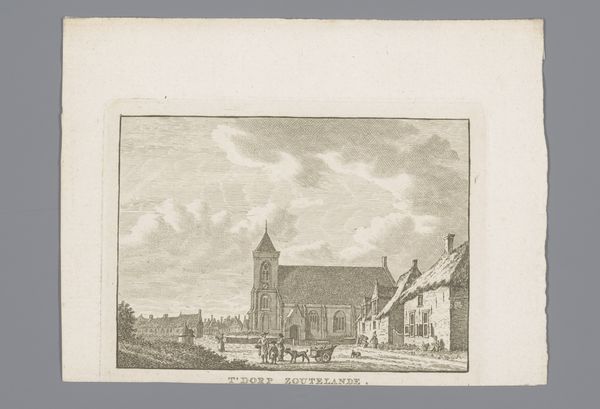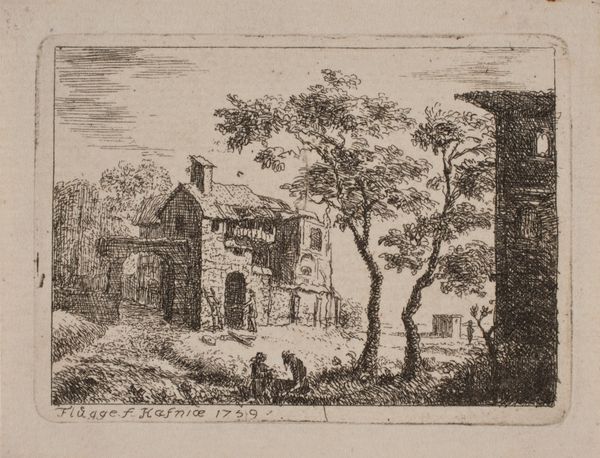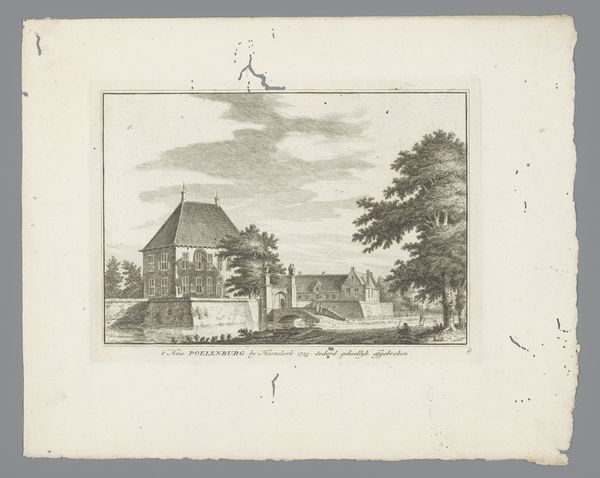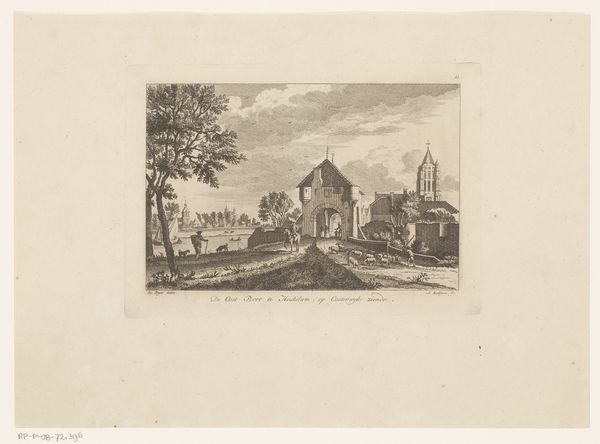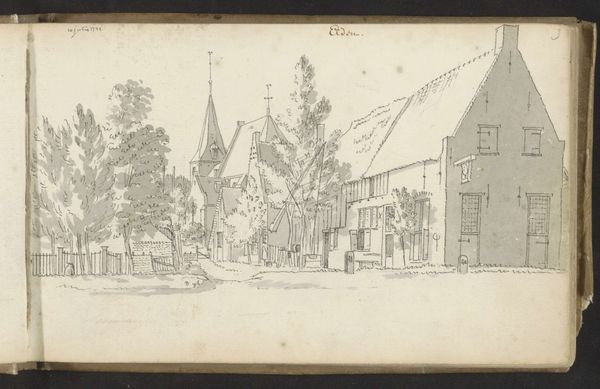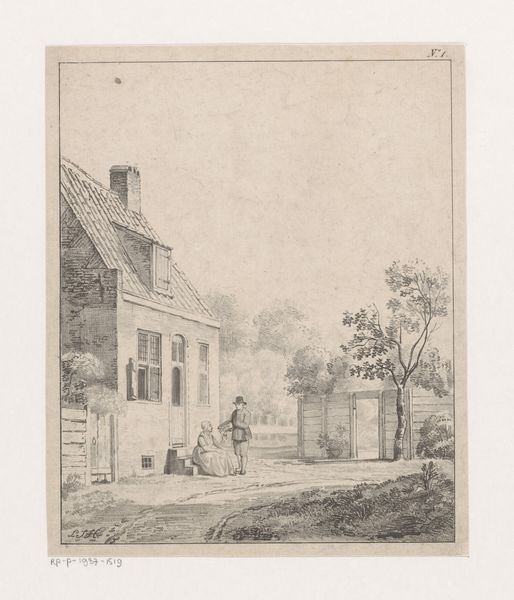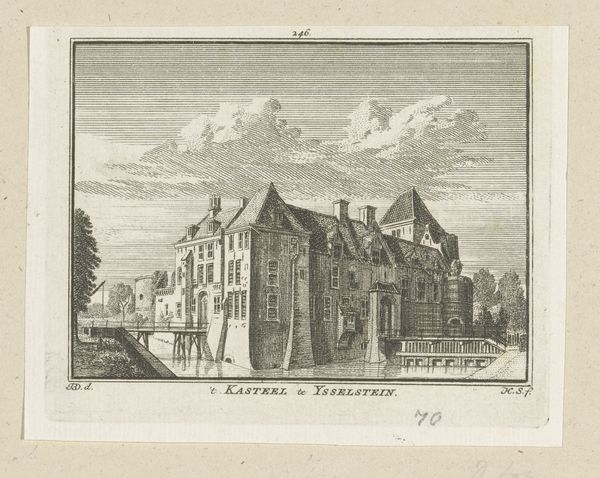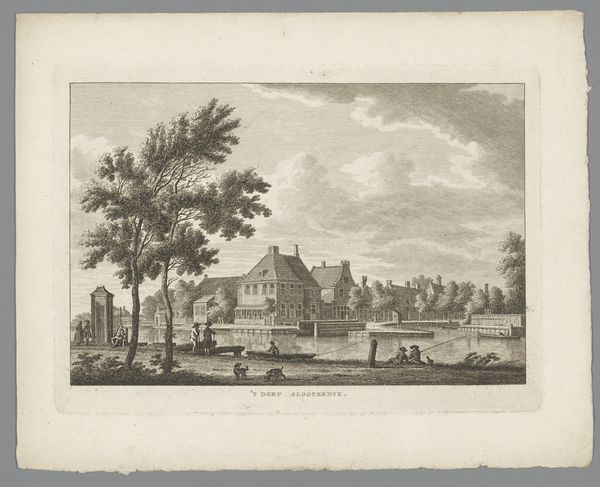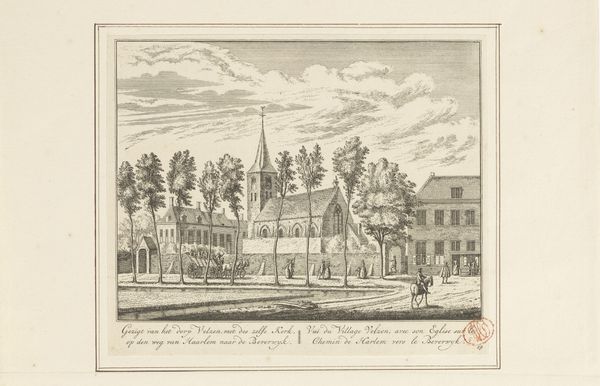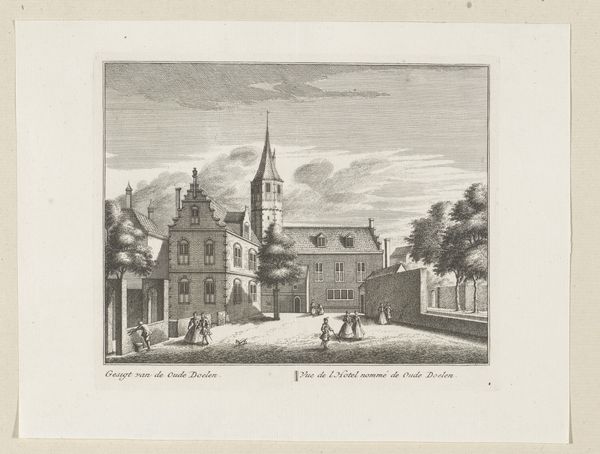
drawing, pen
#
drawing
#
aged paper
#
quirky sketch
#
baroque
#
dutch-golden-age
#
sketch book
#
landscape
#
personal journal design
#
personal sketchbook
#
sketchwork
#
sketchbook drawing
#
pen
#
storyboard and sketchbook work
#
sketchbook art
#
design on paper
Dimensions: height 127 mm, width 226 mm
Copyright: Rijks Museum: Open Domain
Jan de Beijer made this drawing of Stormerdijk Castle near Nieuwegein with pen in 1750, a time when the Dutch Republic was a major economic power, yet increasingly aware of its own decline. De Beijer specialized in topographical drawings of castles, cities, and villages. These detailed depictions played a crucial role in shaping Dutch identity and collective memory. Such images catered to the pride of the Dutch burghers, who defined themselves by their local and regional ties. This drawing participates in the cultural practice of mapping and documenting the Dutch landscape. It is both an artistic representation and a form of historical record. The emphasis on accuracy and detail reflects the values of the Enlightenment, where empirical observation and documentation were highly valued. To understand the role of the artwork, we might look at period travel journals, local histories, and estate records. In doing so, we can appreciate how this image offers insight into Dutch society and its relationship to the land.
Comments
No comments
Be the first to comment and join the conversation on the ultimate creative platform.
